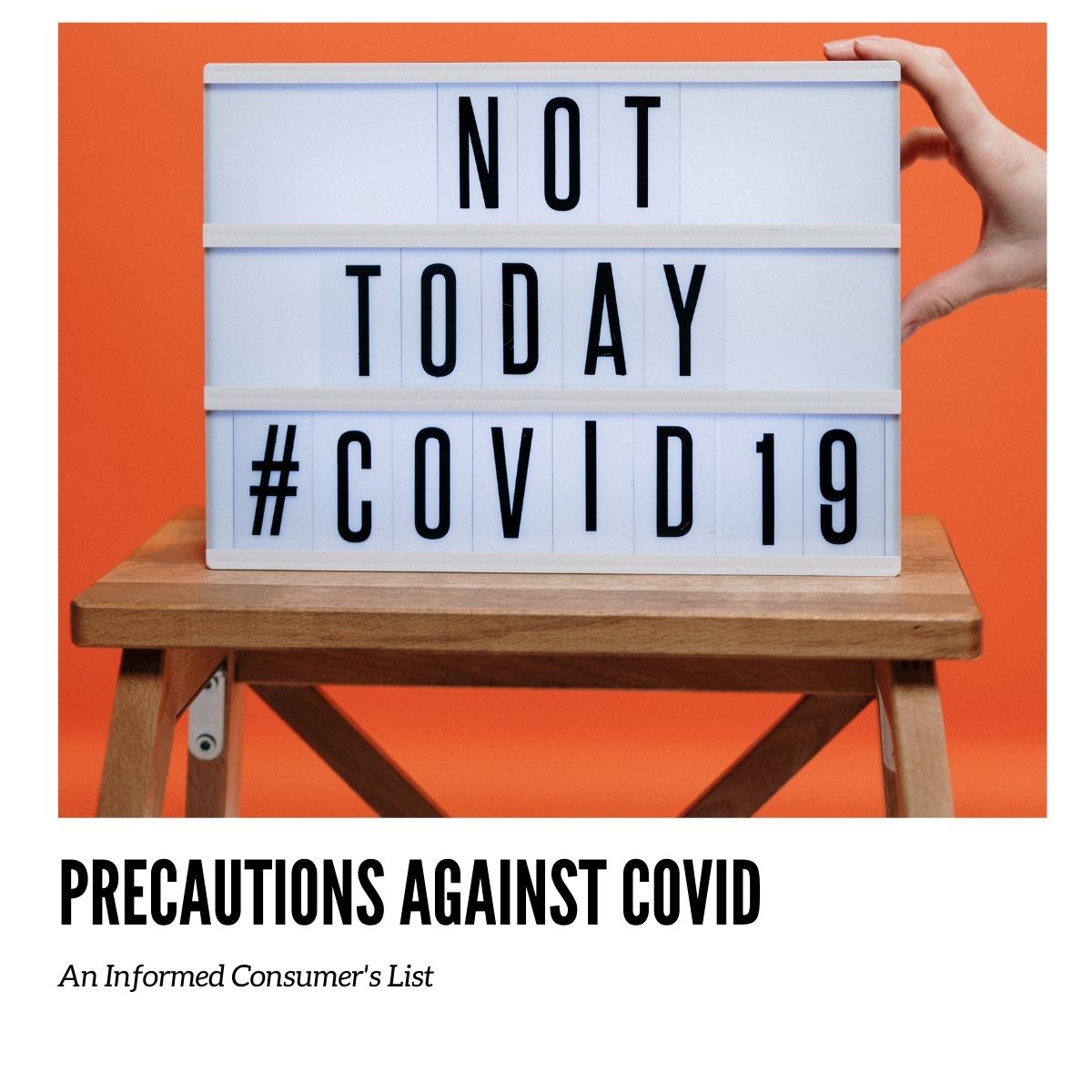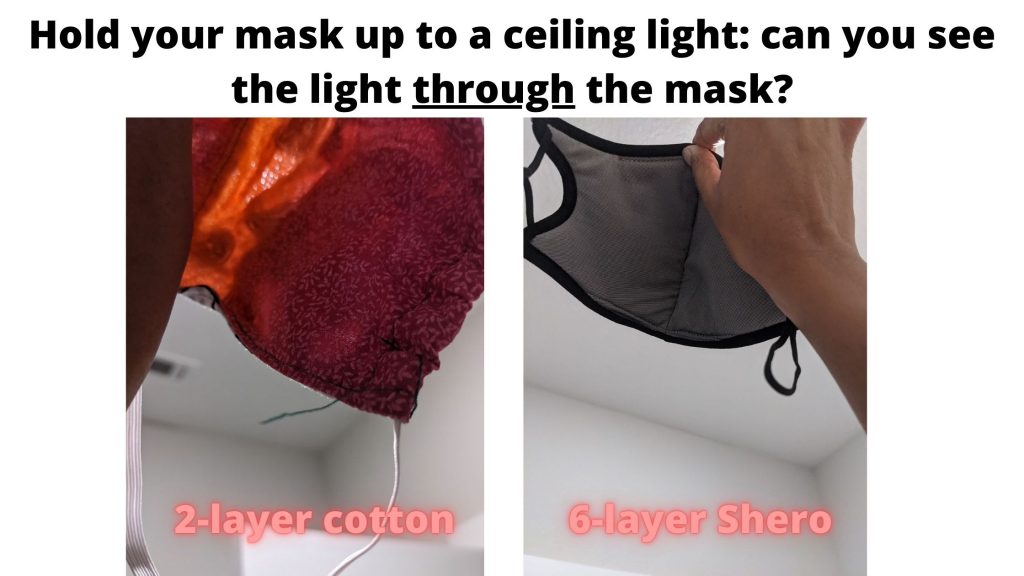Reducing COVID Risk: On Masks, Vitamin D, and Humidifiers to Reduce Aerosol Spread
Please click here to read the full FTC Affiliate Disclosure policy.
- August 27, 2024 @ 14:43 pm EST
- comments

Our lives have been hijacked by COVID for nearly 10 whole agonizing months now. As I wait in the long line to get vaccinated, let’s talk about what I do to stay slightly safer. For example, what are the best masks for kids? Does Vitamin D help? What about humidifiers and air purifiers to address aerosol spread?
Masking up is necessary, but does your mask measure up?
If everyone masks up, it is protective because it greatly reduces the dispersal of the virus by infected people. It’s that simple. While fabric masks are not as protective as N95 or surgical masks, they still work to reduce spread.
However, one really important thing that many do not grasp is that not all masks will work as well as they should.
What you should look for in a mask, based on studies such as this one, is that the mask should fit well, and be at least 3 layers, preferably of hybrid materials. These suggestions are also in line with those recommended by the CDC. One important takeaway from CDC’s list: they recommend a simple test to see if your mask weave is tight enough – hold your mask up to the light and see if you can see the light through your mask. If loosely woven, light passes through. Gaiters and bandanas are controversial and often do not fit these requirements, so I would not recommend them.
To provide a snug fit, two things have struck me as important: a metal nose wire to make it adhere to the contours of the nose (this also prevents fogging up of eyeglasses), and adjustable earloops, because hey, everyone has a different-sized face. Adjustable ear loops are CRAZY useful, I’ve come to find.

I’ve tried many different masks. My discard pile is huge. The only ones I use now are these 3 to 6 layer Shero masks. If you are looking for masks for kids, one option from here (3-layer in size S) also works well, and fits my super petite 6-YO (who can still get into 3T tops).
These masks also have one layer that is copper-infused fabric. Now, while one study showed that contact with copper drastically reduces the time that the virus can stay viable, how protective the copper-infused layer in these masks actually is, I cannot say at all.
Still, with the multiple layers of different materials, the great fit, and the comfort (these masks are the most comfortable ones I have ever used), this is my go-to choice, and the only one I can recommend anymore. I can wear the 6-layer Shero mask for hours on end, and my 6-YO can wear her 3-layer mask comfortably for a 6-hour stretch at school.
They also pass the CDC light test – if you hold them up, can you see the light through tiny pinprick holes in the mask? See the difference between the very first locally made 2-layer cotton mask I got, and 6-layer Shero masks!

Vitamin D – do you need supplements?
Long before COVID made Vitamin D fashionable again, I’d been talking about how important Vit D is for immune functioning. In fact, talking about Vit D has been my hobby horse for a while. Still, I’ve been startled by the strength of the association between Vit D deficiency and the chance of ending up with a more severe form of COVID.
Does this mean that everyone should start taking megadoses of Vit D now? No, it does not. Everyone could probably take moderate levels of Vit D, or start spending more time in the sun.
But really, without a Vit D blood test, people are shooting in the dark about how much they need. Moderate levels of Vit D will not fix deficiency, leaving you potentially more vulnerable to getting really sick if you get COVID. To correct a deficiency, you need megadoses, followed by a maintenance dose, in consultation with your doctor. If you are not deficient, taking the megadose continuously could put you at risk for Vit D toxicity. This is a catch-22 situation. The best way out is to test your blood levels, especially if you are at risk for deficiency, and then act accordingly. Here are good vitamin D supplements, for kids and adults.
Reducing the risk of COVID transmission in school and daycare settings
My daughter’s private school follows the standard directives of masking up, physical distancing, and constant sanitizing/hand washing. I’d also refer back to section 1 of this post and see if your child’s mask is good enough.
But still, all these precautions do not completely protect against aerosol spread, though masking and physical distancing help mitigate risk.
We then added 2 more measures, both funded by parental contributions and donated to the school:
Air Purifiers: How these might help needs no explanation. This was the medical-grade brand agreed upon, after consulting a medical professional.
Humidifiers: Why does the flu season coincide with winter? Partly because the air is drier, of course. Increasing the relative humidity appears to be a powerful measure against respiratory virus spread. A well-conceived study showed that increasing the relative humidity to 40% greatly reduced hospital-acquired infections.
Does this translate to the school setting? The answer seems to be yes. The Mayo clinic did this fascinating study, where they humidified some rooms in a preschool, and left others as normal, and found the absenteeism because of influenza was reduced by two-thirds in the humidified classrooms. More studies like this one are 100% needed.
If anyone is interested in reading about the mechanisms of how humidifiers may help, this blog discusses the theory.
When I read all this, I about pulled my hair out in frustration that this simple idea (putting a humidifier in classrooms) is not even being considered for further study as a widespread public health solution. In this frustrating world we live in, many good ideas never reach the point of execution. Sometimes, the only thing you can do is to figure out a way to execute them for yourself, if possible. That’s what I did with the humidifiers. I communicated these studies to the school’s principal. She agreed to have them placed in my daughter’s classroom, and they will be doing this for every classroom, continued beyond this winter. If the people in charge of the decision making are open to reading about and making nimble decisions based on science, any parent can do this.
If anyone reading this wants to advocate for a humidifier in your child’s classroom (not just for this winter, but in winters to come), this one is a great choice. It’s 6L, which means it needs way less frequent refills, and if you follow our deals page, there is (on rare occasion) a coupon that reduces price by half. If you are supplying a humidifier, also supply a hygrometer to ensure that relative humidity is between 40-60%.
In Summary…
We are doing the very best we can during trying times. Each of us needs to make the decision that works best for our families. While making those decisions, the suggestions here are just designed to reduce your risk as much as possible, with the recommendations above being backed by science. Right now, we live in an age of misinformation. Whenever you read anything on the internet, follow the sources and vet them for yourself. See if they are legitimate. Every conclusion made here is based on peer-reviewed scientific materials or official sources of information, but follow those sources back. Stay safe through the coming months!















